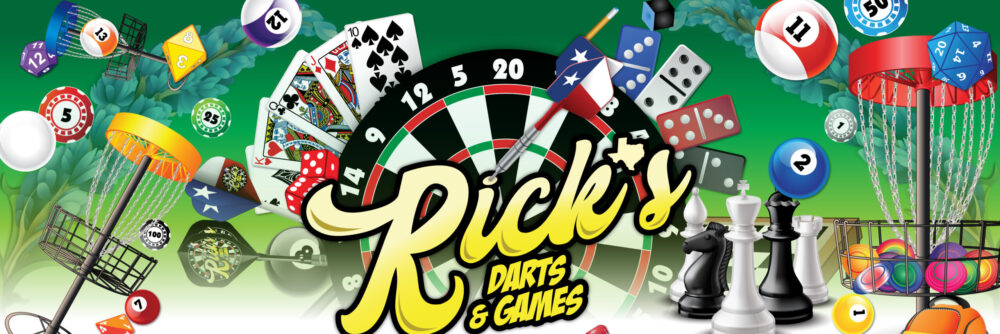FIND A DART THAT FITS..
Fit. Just like a glove or bowling ball, a dart should fit one’s hand so comfortably that the darter is hardly aware of holding it.
The first consideration in finding that perfect fit is “registration”. That means the dart’s shape should fit the hand so comfortably that the darter never has to look at it, almost instinctively grips it gently, and is never tempted to change grip in the middle of a game.

When picking up a dart, without looking at it, the barrel should immediately fall into a comfortable position in the hand. Some sort of grooving, scallop, or bands of knurling should provide a grip that is identical, every time you pick up the dart. Everyone is a little different: different sized hands and fingers, plus different skin textures. There are thousands of dart barrel designs, each one fitting a slightly different shaped hand & grip.
To check this, place a few different darts on a table. Look away, then reach down and pick up a dart. Immediately, within a second or so, there should be what I call an “Ah-Ha!” moment. The dart should just easily fall into a comfortable grip without thought or a lot of manipulation.
If the darts doesn’t have that instant comfortable feel, keep trying darts, until you find the right dart to fit your hand.
When “throwing darts”, the idea is to just throw your fingertips through a spot on the board.. the dart just goes along for the ride. Choose a dart that is so comfortable that you can focus on the target and never have to think about the dart.
GET A GRIP..
The dart should have enough texture so that it will never slip from your fingers, with even the lightest grip. The dart barrel should just gently rest on the fingertips.
Test this by holding a dart as though ready to throw, at roughly eye level. Now gently move the hand back & forth, as though practicing the start of the dart stroke. Gradually loosen the fingers. The dart should not slip until the fingers are actually opened away from the darts, as in a throw. If the dart still slips while in a firm grip, the darter will have a tendency to squeeze the dart too hard.
Such a too-hard grip will result in a wobbly throw, as the fingers & thumb cannot then release all at the same time. A tight grip will always mean that one or more fingers will push the dart aside during the release.
The dart should be held in the lightest possible grip, just enough to keep it from falling out of the hand during the stroke.
BUT NOT TOO-MUCH GRIP!
The dart should not have so rough a grip that it sticks to your fingers. On a hot day, or during a hot game, fingers might become moist. If a dart barrel has too much grip, it will feel sticky, and not release evenly.
Test this by squeezing the barrel, then let go. If the dart feels “tacky”, there is too much grip for your skin texture. Try to find a dart that is easy to hold, but will not stick to your fingers no matter how humid the day, or if your hands become sweaty at the end of a hot game.
WEIGHT
Weight is the last consideration. Although many darters look for weight first, the grip is far more important. A little heavier dart helps with follow-through, especially for darters who don’t play on a regular basis. Pick a dart that fits your hand & grip first, about before worrying about weight. If you play once a week or less, then possibly consider the same general grip style in a slightly heavier version.
MATERIALS
Brass – Inexpensive, but bulky & wears down fast
Nickel/Silver – Inexpensive, bulky, but better appearance and doesn’t wear down as quickly as brass
Tungsten – Very dense & durable metal, generally combined with nickel and small amounts of copper & iron to improve machinability.
Nickel/Tungsten darts are standard for competitive play, because they are slim, durable, and don’t wear down too quickly. The higher the percentage of Tungsten, the more durable and dense the dart. Most quality Nickel/Tungsten darts are in the range of 80% to 95% tungsten. For darters who throw darts more than once a week, 90% or more tungsten content is especially worthwhile due to the improved durability.
The best way to choose darts is to try them first. At Rick’s Darts & Games, we have 3 permanent try-out dartboards that you can use to try-out darts. Our experienced trained staff can help you pick the perfect darts, as well as offer throwing tips to new darters.

By appointment, Rick Osgood is available for full darts lessons or to offer advice on solving specific throwing problems. With 45 years experience throwing, teaching, and selling darts, he has encountered & found solutions for just about every darts situation & problem one might imagine.
So, make your darts shopping a uniquely fun and enjoyable experience..
visit Rick’s Darts & Games!



